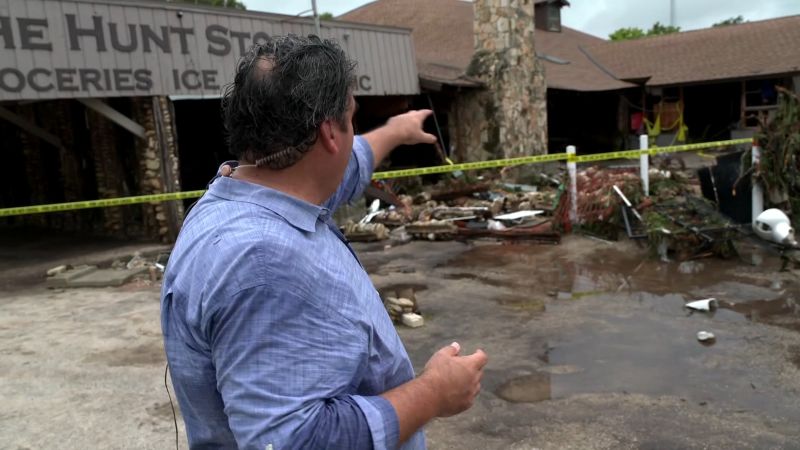
In a dramatic turn of events, the unincorporated community of Hunt, Texas, found itself grappling with the aftermath of severe flash flooding. The Guadalupe River surged by 20 feet in less than two hours, submerging rooftops and forcing families to evacuate from their second-floor homes. The sudden rise in water levels has left more than 20 girls from the nearby Camp Mystic unaccounted for, raising alarm and concern across the region.
CNN correspondent Ed Lavandera is currently on the ground, providing a firsthand account of the devastation. “The scene here is simply staggering,” Lavandera reported, as he described the extent to which the floodwaters have engulfed the area. His coverage highlights the urgent need for rescue operations and relief efforts.
The Scale of the Disaster
The flooding in Hunt serves as a stark reminder of the unpredictable nature of weather patterns in Texas. The Guadalupe River, known for its scenic beauty and recreational appeal, turned into a force of destruction, catching residents off guard. The rapid rise of the river’s waters has not only displaced families but also disrupted the daily life of this tight-knit community.
Local authorities have been working tirelessly to manage the crisis, deploying rescue teams and coordinating with state emergency services. The primary focus remains on locating the missing girls from Camp Mystic, a popular summer camp that has been a staple in the area for decades.
Historical Context and Community Impact
The flooding in Hunt is reminiscent of past natural disasters that have struck Texas, a state frequently dealing with extreme weather events. In 2015, the Memorial Day floods caused significant damage across Central Texas, highlighting the region’s vulnerability to such occurrences. These events underscore the need for improved infrastructure and preparedness plans to mitigate future risks.
For the residents of Hunt, the flooding is not just a physical disaster but an emotional one as well. Many families have deep roots in the area, and the loss of homes and property is a devastating blow. Community leaders have rallied together, organizing shelters and providing essential supplies to those affected.
Expert Opinions and Future Implications
Experts in climate science and disaster management have weighed in on the situation, pointing to broader environmental patterns that may be contributing to the increase in severe weather events. Dr. Linda Thompson, a climatologist at the University of Texas, noted, “We are seeing a trend towards more intense and frequent flooding events, likely exacerbated by climate change.”
The implications of this flooding extend beyond the immediate crisis. As Texas continues to grow and develop, the need for sustainable urban planning and resilient infrastructure becomes increasingly critical. The state must address these challenges to protect its communities from future disasters.
According to the National Weather Service, “Flash floods are the leading cause of weather-related deaths in the United States, emphasizing the need for heightened awareness and preparedness.”
Looking Ahead: Recovery and Resilience
As rescue operations continue and the floodwaters begin to recede, the focus will shift towards recovery and rebuilding. The community of Hunt, along with state and federal agencies, will need to collaborate on long-term recovery plans. This includes repairing damaged infrastructure, providing financial assistance to affected families, and implementing measures to prevent similar disasters in the future.
The events in Hunt serve as a poignant reminder of the power of nature and the resilience of communities in the face of adversity. As the search for the missing girls continues, the nation watches with hope and concern, ready to support the recovery efforts in any way possible.
In the coming weeks, the story of Hunt, Texas, will continue to unfold, offering lessons in both vulnerability and resilience. The community’s response to this crisis will undoubtedly shape its future, as residents work together to rebuild and strengthen their ties.






